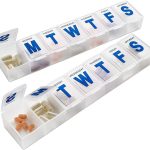Medication Management Basics: A New Nurse’s Guide to Drug Safety

Medication management accounts for up to 40% of a nurse’s time during clinical practice. Grasping the basics of this critical element of your role from your very first year as a nurse is instrumental to your future success in your nursing career.
From knowing your Rs to accurately interpreting administering instructions, taking care when preparing correct dosages of medications, and managing and monitoring the administration of drugs to patients, there’s certainly a lot to take in.
Here’s our guide to drug safety for new nurses.
Safely Managing Meds: Tips for New Nurses
When it comes to drug safety, there are several steps involved in safely managing medication:
Accurately Interpreting Administering Instructions
The first and perhaps most important step to medication management as a nurse? Being able to interpret the administering instructions correctly. This takes skill, attention to detail, and above all, focus. As a nurse, it’s easy to become distracted in the frenetic environment that is a hospital setting. Frequent interruptions, phones ringing, demanding patients, and other emergencies can break even the most focused nurse’s concentration and disturb their train of thought. In these instances, it’s essential to stay clear-minded and level-headed, and above all, to concentrate on the dosage instructions. Doing this will reduce the risk of making errors in the administration of medication to patients.
Preparing Dosages of Drugs for Patients
Next, the correct dosage of the correct medication needs to be prepared. Different patients will have different needs, treatment plans, and required doses. For this reason, nurses need to pay close attention to the dosages of medications they’re administering to patients. Administering the wrong dose, or the wrong medication, can have dire effects – it can even be fatal. In the case of former Tenessee nurse Radonda Vaught, administering the incorrect drug not only ended her career – she faced jail time. Charged with ‘criminally negligent homicide’ after making a fatal mix-up in the medication she administered to her 75-year-old patient, Vaught’s trial caused uproar in the medical community. The event evoked the question: should honest mistakes be criminalized? And if so, where do we draw the line? In a statement issued by the American Nursing Association, the lawsuit set a dangerous precedent for nurses and future transparent reporting of errors.
Managing and Monitoring Administering of Medications
So, you’ve prepared the correct medication, at the correct dose. Now, you need to administer it correctly. Drug administration can take different routes – orally, intravenously, or otherwise. Nurses must ensure they are administering medications using the correct method. Most importantly? Check and double-check to prevent any errors. You don’t want to share Radonda’s Vaught’s fate, after all.
The Nursing Rs: Know Your ‘Rights’
What are the Rs of drug administration? Also known as the nursing ‘rights’, these include:
Right Patient
As a nurse in a hospital setting, you’ll be treating a huge array of patients. Some of these patients may even share identical names. So, how do you identify the correct patient? Check their medical wristband and ID number against your patient chart.
Right Drug
In a horrendously unfortunate case of picking up an incorrect drug that “looked identical”, another lawsuit implicated a nurse in the death of a patient. By injecting their patient with a paralytic instead of an antacid, the nurse was sued by the family for the fatal outcome. For this reason, ensuring nurses are administering the correct medication to patients is paramount.
Right Route
As discussed, the route of administration is also critical. But whether it’s injected, intramuscular, or topical, nurses need to be sure they’re getting it right, to facilitate correct absorption and application of the drug in question.
Right Time
Often, medications need to be administered at a specific time, within a certain window, or after a certain number of hours following the last dosage.
In the case of drug administration, time also refers to the rate at which a medication is administered. Some drugs – like vancomycin, for instance – must be administered very slowly – via infusion – over at least 60 minutes, to avoid over-flushing the patients’ system with the drug.
Right Dose
Finally, the right dose of medication is also critical. You don’t want to overdose your patient, and similarly, administering too little is also unlikely to elicit positive results.
So – remember your ‘rights’, and you’ll be well on your way to administering drugs safely as a nurse.





